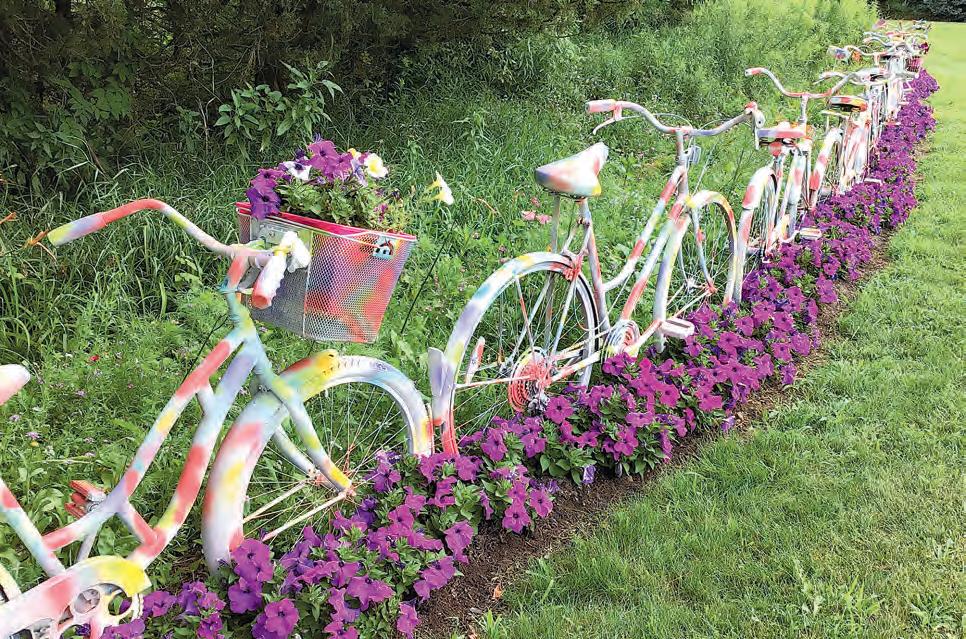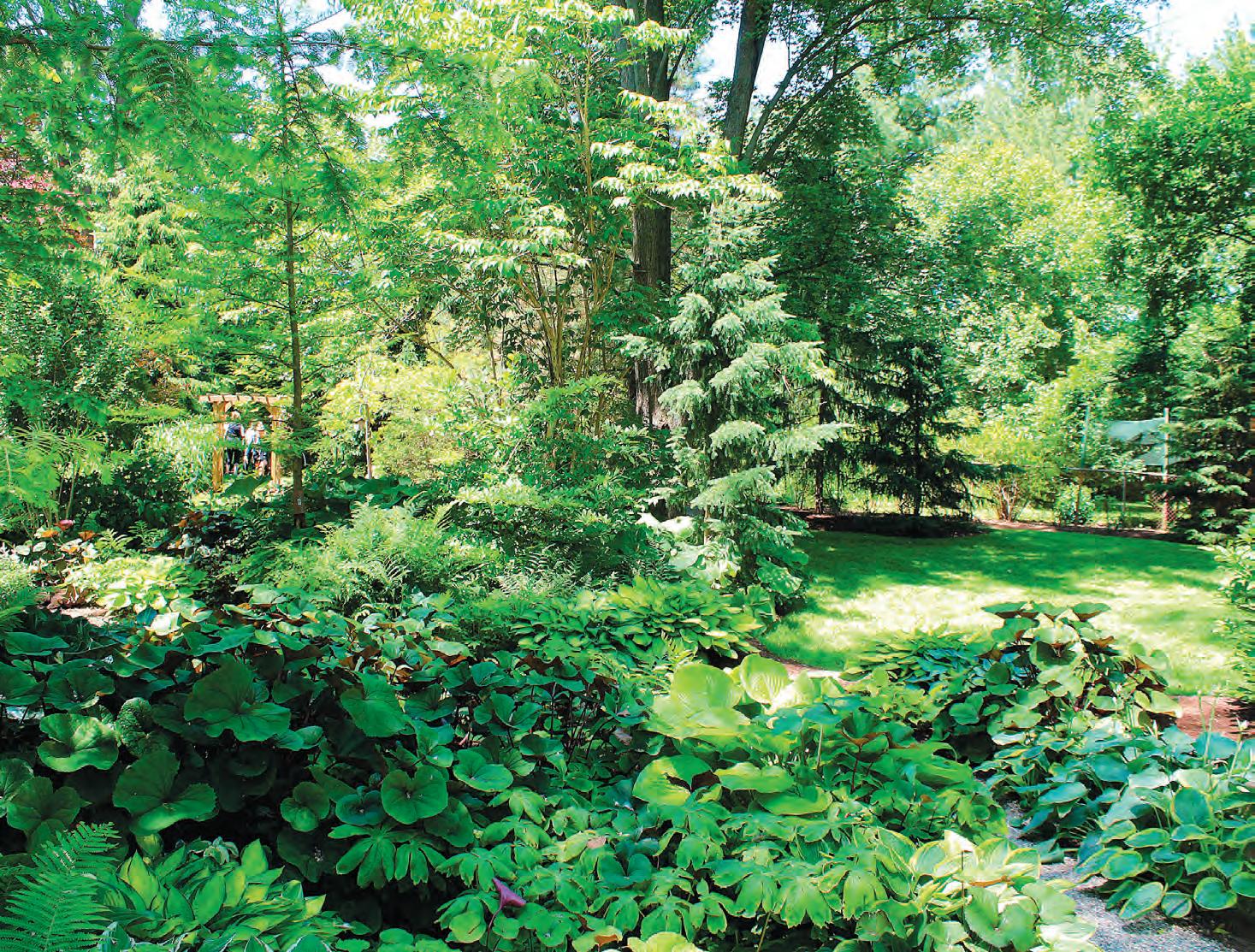
8 minute read
Ask MG
Trees • Shrubs • Perennials Premium Landscape Supplies:
Composted Pine Bark Premium Soils
Advertisement
Bulk Michigan Peat
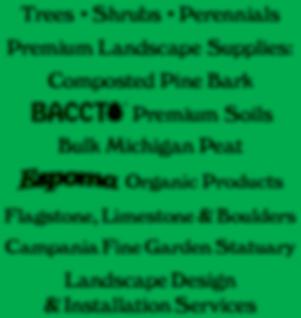
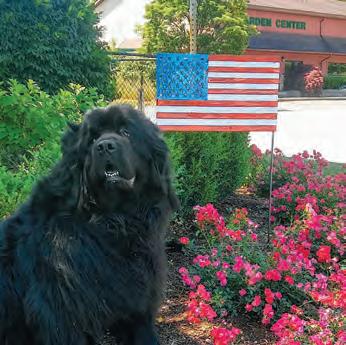
Organic Products Flagstone, Limestone & Boulders Campania Fine Garden Statuary Landscape Design & Installation Services
8215 Elizabeth Lake Rd. • White Lake


248-698-4741
MulliganLandscaping.com
No Gas. No Oil. No Fumes. No Mess.
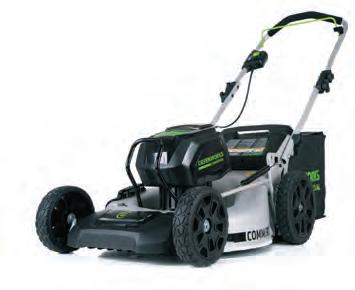
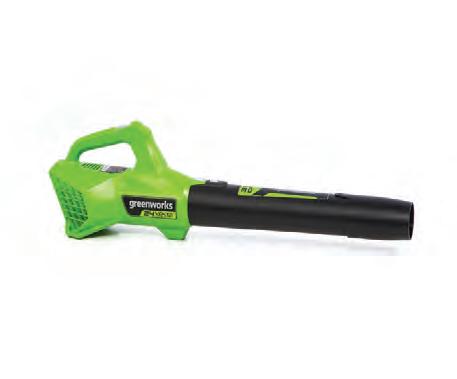

GREENWORKS ® battery-powered lawn mowers, blowers, string trimmers, and edgers
deliver the power and performance of comparable gas-powered tools without the mess, noxious fumes, stamina-reducing vibration and noise associated with gas products. For more information, go to:
www.GreenworksTools.com
FOR A COMPLETE LINE OF GREENWORKS EQUIPMENT, PLEASE VISIT:

1241 W. 14 Mile Rd. Clawson, MI 48017 248-744-6946 www.billingslawn.com Easy-to-grow, low groundcovers
I would love to have creeping thyme or another easy grower in areas in between other plants. I was thinking thyme because I could use it for cooking too. Something low maintenance and that would discourage weed growth. Any advice? J.D., Plymouth
Creeping thyme is an easy grower in full sun and should be planted in areas readily accessible to the kitchen. For areas not so close, but also in full sun, consider stonecrops (Sedum). There are a number of low-growing sedums in a variety of colors that form low, dense mats that can keep weeds in check. They are easy to plant, easy to care for, and with their relatively shallow roots, easy to remove and transplant to unfilled areas.
Sedums love dry, sunny conditions. Many people use them in place of mulch. It is quite popular to take a variety of sedums and create a patchwork rock garden because there are so many colors and leaf textures.
If you have shady conditions, try periwinkle (Vinca minor), also known as myrtle. It tolerates drought, and grows in full sun to part shade. Keep it watered until established. It quickly forms a strong mat over the soil that prevents weed seeds from rooting. Its stems do not become woody and invasive like English ivy. It is still a vine and will want to climb any nearby tree. But it is easily controlled by cutting through the soil and pulling out what is too exuberant.
Another low maintenance groundcover is ajuga, or bugleweed, which is tolerant of sun or shade. It is slow to start, but once established, is easily managed by thinning. It grows by surface roots called stolons. Like the vinca, it roots at each node on the stem.
Dealing with quackgrass
How do I eradicate quackgrass without harming our regular grass? Every year this eyesore takes over my lawn. T.W.
Make sure what you have is quackgrass and not crabgrass, which is a reseeding annual. Crabgrass can be controlled with a pre-emergent weed preventative applied in spring. You can check it against pictures on the Michigan State University weed identification website.
Quackgrass unfortunately is a perennial weed and successfully grows by rhizomes underground. First, there is mechanical removal—literally digging up the offending patches, removing surrounding soil, adding fresh topsoil and reseeding. This is not fail-safe because quackgrass rhizomes can run 6 to 8 feet. Any piece left behind can sprout a new plant. The second method for quackgrass is chemical control. Only glyphosate (Roundup and other products) will kill this weed and penetrate through its rhizomes. This is a nonselective herbicide, which means it will also kill the desirable turf grass. There is not an herbicide made for quackgrass specifically.
Depending on how much of your lawn is compromised, you may want to treat the larger portions with herbicide, wait a week, re-treat persistent patches, remove the dead grass, add fresh top soil, and reseed.
Doing nothing is also an option, since quackgrass is green and mowable and comes back every year. However, most people don’t like the coarse look when compared to our turf grasses. Once you decide how to eradicate your problem, look at your fertilization methods and mowing practices. Quackgrass wins when the turf grass is weak. Fertilize in spring with a balanced nitrogen amendment, apply a pre-emergent for the annual weeds, mow high but frequently to stimulate growth, and deep water when there is drought. Strengthen your existing lawn so that quackgrass and annual weeds can’t make inroads into the soil where good root systems grow.
Overwintering bonsai
I received a small dish bonsai as a gift. The instruction sheet says it should be outside for the winter. It does not seem like it will survive winter in its small dish. Suggestions? P.J.
The term “winter” is relative, depending on where the bonsai specimen originated, from where it was shipped, and what type of plant it is. You are correct to assume our winter would probably be disastrous for your small-sized specimen.
First, determine if you have an indoor or outdoor tree. Outdoor specimens are traditionally juniper, pine, and deciduous species like elm and birch. Indoor specimens are jade plants, Hawaiian umbrella trees, and cute little ficus—all glorified houseplants. Once you know what you have, you could put an outdoor bonsai in fresh air, but do not let it freeze.
There are three general rules for all bonsai, which literally means “planted in a container.” 1) Keep your bonsai away from direct heat or drafts. 2) Position it in plenty of indirect sunlight. 3) Give it plenty of humidity to keep its soil moist.
The number one culprit of bonsai death is over or under watering. This small pot is a tight environment for roots to grow. You water when the soil feels dry to the touch. This may be daily and cannot be a routine. Provide a good drainage tray and soak the soil until water escapes. Do not let the pot sit in water or the roots cannot get oxygen to grow. Only use fertilizer after thoroughly watering; never on dry soil. If the plant thrives, you will
Have a question? Send it in!
Go to MichiganGardener.com and click on “Submit a question”
want to repot it between 2 to 5 years using soil that holds water but has small stones or particles to allow good drainage.
Battling poison ivy
We have a vine that is taking over and killing all of our landscaping. I don’t know what this vine is, but it spreads along the ground and climbs all trees and any other landscaping that it comes across, eventually killing the trees it climbs and spreads into. We cut and pull it out of the trees, and pull the roots out of the ground, but have yet to figure out how to kill it. It has fibers on the vine that get under your skin and itch like fiberglass when you touch it, or when it brushes across your skin. How do we get rid of this dreaded vine? T.M., Brighton
Based on your description and the fibers on the vine that create severe irritation, it appears you have an infestation of poison ivy (Toxicodendron radicans). Poison ivy contains an irritating toxin called urushiol that is in all parts of the plant. Poison ivy adheres to trees with hair-like, aerial roots. It crawls on the ground until it finds an upright structure and then it ascends. Although it is not a constricting twining vine, like Chinese bittersweet or wild grapevine, the mass of its leafy canopy shades out the tree that it climbed, removing the tree’s ability to photosynthesize and feed itself.
Because poison ivy grows both along the ground and underground with rhizomes and taproots, cutting and pulling it out of the trees is not enough. You need chemical control. The two most effective herbicide active ingredients are triclopyr and glyphosate. If you are comfortable using a concentrated form of glyphosate (Roundup and other products), then you need to spray the cut stems at the ground level with the herbicide so it reaches the rhizomes and taproots. Wear long pants, long sleeves and long rubber gloves. Using duct tape, seal pant legs to your boots. Wear a mask and target spray the ivy stems where they were cut.
According to the Michigan State University Department of Plant and Soil Science, triclopyr is more effective at controlling poison ivy. However, it can persist in the soil for up to 30 days. It can potentially injure sensitive, desirable species planted in a treated area within that timeframe. Glyphosate should not pose a risk once dry due to its ability to bind with clay and organic matter in the soil. Both will affect other plants if they are accidentally sprayed. So care must be taken to shield the desirable plants.
Because of the scope of your infestation, you might consider hiring a professional service that specializes in poison ivy removal and eradication. There are a few listed online that work in southeastern Michigan.
Any and all debris should be placed in black garbage bags and never composted. Dispose of them in the trash. The prohibition to burning is that the plant releases the urushiol into the air. That can be inhaled and the toxin is now in one’s air passages, being difficult to treat medically.
Answers provided by Beverly Moss, owner of Garden Rhythms.
Creating beautiful outdoor spaces for over 50 years



Garden Center Nursery Landscaping
Closed September 6 & 7
Happy Fall Y’all
Mums, Pansies, Fresh Annuals, Perennials: Everything you need for fall gardening! Order online for curbside pickup or delivery
Houseplant Specials for Teachers & Students
4431 South Wagner Rd, Ann Arbor, MI 48103 734-663-7600 • turnersannarbor.com
POTTERY

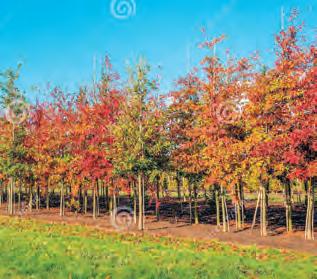

TREES
SHRUBS

STATUARY

Trees & Shrubs • Large Perennial Selection Full Landscape Design Services Livingston County’s Largest Pottery Collection Greenhouse & Gift Shop • Organic Fertilizers Bulk Mulch, Soil, Rock & Sand Delivery Soil Amendments, & Other Garden Products

